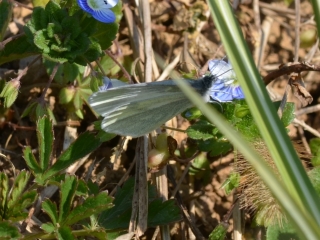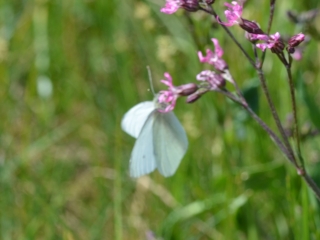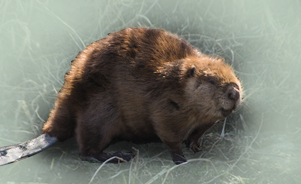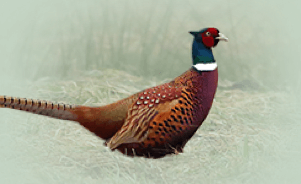Large white Pieris brassicae
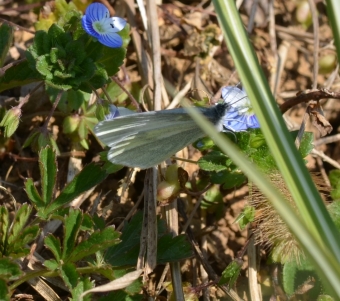
Features
Adults appear in two or three generations from March until August or even September, they can also migrate. It was once considered a serious pest whose larvae fed en masse on cabbages (Brassicaceae).
| Species | Insect |
| Living space | Field, Meadow, Treeline |
| Size | 50-60 mm (wingspan) |
Description
Male: The upperside of the male is creamy white. The forewing is irrorated (sprinkled) with black scales at the base and along costa for a short distance. The apex and termen above vein 2 are more or less broadly black with the inner margin of the black area containing a regular even curve. In one or two specimens a small longitudinally narrow black spot was found in interspace 3. Hindwing: uniform, irrorated with black scales at base, a large black subcostal spot before the apex, and in a few specimens indications of black scaling on the termen anteriorly. The underside of the forewing is white, slightly irrorated with black scales at the base of cell and along costa. The apex is light ochraceous brown with a large black spot in outer half of interspace 1 and another quadrate black spot at base of interspace 3. The hindwing is light ochraceous brown, closely irrorated with minute black scales. The subcostal black spot before the apex shows through from the upperside. The antennae are black and white at apex. The head, thorax, and abdomen are black, with some white hairs, where underneath is whitish. Female: The upperside of the female is similar to that of the male, but the irroration of black scales at the bases of the wings is more extended. The black area on apex and termen of forewing is broader, its inner margin less evenly curved. A conspicuous large, black spot also exists in the outer half of interspace 1 near the base of interspace 3. On the hindwing the subcostal black spot before the apex is much larger and more prominent. The underside is similar to that of the male but the apex of the forewing and the whole surface of the hindwing is a light ochraceous yellow, not ochraceous brown. The black discal spots on forewing are much larger. The antennae, head, thorax, and abdomen of the females are the same as for the male.
Features Temenica (3)
SPECIAL ogr.

